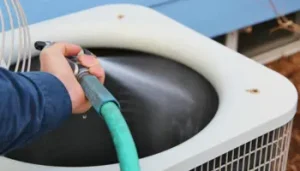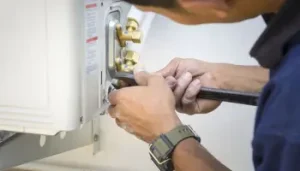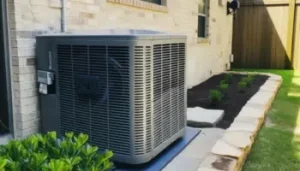Dealing with HVAC issues can be frustrating, mainly when they occur at inconvenient times. While it’s always advisable to seek professional assistance from experts like Diamond Heating & Cooling, there are several troubleshooting steps you can take before making that call. In this blog post, we will provide you with valuable tips and step-by-step instructions to help you tackle common HVAC problems and resolve them on your own. By following these troubleshooting tips, you can save time, money, and unnecessary service calls.
1. Check Air Filters:
One of the most common causes of HVAC system inefficiency is dirty or clogged air filters. Dirty filters restrict airflow, forcing your system to work harder and consume more energy. Start by locating the air filters in your HVAC system, which are typically found in the return air duct or near the furnace or air handler. Remove the filter and inspect it for dust, dirt, and debris. If it appears dirty or clogged, replace it with a new one. Regularly changing or cleaning your air filters can significantly improve the performance and energy efficiency of your HVAC system.
2. Adjust Thermostat Settings:
If you’re experiencing heating or cooling issues, double-check your thermostat settings. Ensure that the thermostat is set to the desired temperature and the fan is set to the appropriate mode (auto or on). If you have a programmable thermostat, verify that the schedule is correctly programmed. Also, check the batteries in your thermostat and replace them if necessary. Sometimes, incorrect thermostat settings can result in HVAC system malfunctions, so adjusting them appropriately may resolve the issue.
3. Check Circuit Breakers and Power Supply:
If your HVAC system is not turning on at all, it’s essential to check the circuit breakers in your electrical panel. Locate the breaker that controls the HVAC system and check if it has tripped. If it has, switch it off and then back on to reset it. Additionally, make sure that the HVAC system is receiving power by checking the main power switch near the unit. If the circuit breaker continues to trip or the power supply is disrupted, it’s best to contact a professional HVAC technician to investigate the electrical issue.
4. Clean the Outdoor Unit:
For central air conditioning systems, the outdoor unit, also known as the condenser unit, plays a crucial role in cooling your home. Over time, the unit can accumulate dirt, leaves, and debris, which can hinder airflow and reduce its efficiency. Inspect the outdoor unit and remove any obstructions or debris around it. Use a garden hose to gently clean the fins and coil of the unit. However, exercise caution and avoid using excessive water pressure, as it may damage the fins. Regular cleaning of the outdoor unit can improve its performance and extend its lifespan.
5. Identify Warning Signs:
Being aware of warning signs can help you identify when it’s time to call a professional HVAC technician. Some common warning signs include strange noises, unpleasant odors, inconsistent temperatures, frequent cycling, and unusually high energy bills. If you notice any of these signs, it’s best to seek professional assistance from Diamond Heating & Cooling. Their trained technicians have the expertise to diagnose and address complex HVAC issues effectively.
Conclusion:
While HVAC problems can be complex and require professional expertise, there are several troubleshooting steps you can take before reaching out to a professional. By checking air filters, adjusting thermostat settings, inspecting circuit breakers, cleaning the outdoor unit, and being aware of warning signs, you can potentially resolve common HVAC issues on your own. However, if the problem persists or if you’re unsure about performing any troubleshooting steps, it’s always recommended to contact a reputable HVAC company like Diamond Heating & Cooling. Their experienced technicians can provide reliable solutions and ensure the optimal performance of your HVAC system.



